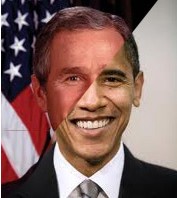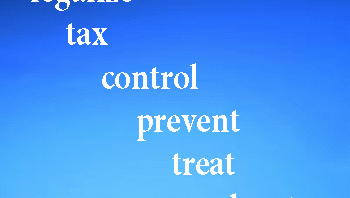The so-called War on Drugs has been going on for over 40 years, but despite the colossal resources that have been thrown at this failed social experiment, the world’s appetite for illicit substances keeps heading stubbornly upwards and drug–trafficking is as flourishing as ever, sowing mayhem and chaos all over the planet. To whoever is willing to analyze the issue without ideological or moralist goggles, it is painfully obvious that this doomed war is even less winnable than the war in Afghanistan (or the war in Iraq for that matter), and has been going on four times longer, at a far higher cost. The list of retired world leaders speaking out against drug prohibition and calling for a paradigm shift on drug policy is growing by the day, and includes former UN Secretary General Kofi Annan and a long string of ex-presidents, ex-drug czars and top drug-warriors, most notably from Latin America. The flow of retired high-level officials coming out of the War on Drugs closet is turning into a stampede.
Unfortunately, it was so far considered political suicide for lawmakers of all nationalities, kept in tight line under the hawkish watch of US Prohibitionist-in-chief, to acknowledge the abysmal failure of the War on Drugs while they were in office. Colombian President Santos was a notable exception, tiptoeing over a careful legalization line even before he was elected, and keeping his stance once in office. Mexican president Calderon started his mandate with a fierce determination to tackle the problem once and for all, but nearing the end of his 6 years term, and after a semi-official body count toppling 50,000, doubt seems to be creeping in. His determination was first shaken by the Monterrey massacre in August 2011, while the fast-and-furious debacle rightly infuriated him. The first expression of regional discontent came on December 6th, 2011, with the publication of a declaration calling for the exploration of “regulatory or market oriented options”, signed by 10 heads of states of the Central-American and Caribbean region members of the Tuxtla System for Dialogue.
But the big surprise came from Guatemala where, a few days after taking office in January 14th, 2012, President Perez Molina, a former general elected on a law and order platform, started talking about legalization as a way out of the War on Drugs conundrum. Following discussions with Colombian President Santos, President Perez Molina further declared on February 11th his intention to present a proposal for drug legalization in Central America at the April 14-15 Summit of the Americas. Guatemalan Vice-President Roxana Baldetti started a tour to discuss the proposal with regional leaders and garner support for it, starting with Panama, Costa Rica and Salvador on February 29th.
Unsurprisingly, the move was greeted by a quick rebuke from the US government, who dispatched Secretary of Homeland Security Janet Napolitano to the region on February 28th, one day ahead of Roxana Baldetti’s own tour. Napolitano gained support for the continuation of the war on drugs from the Presidents of Costa Rica, Salvador and Panama, three of Baldetti’s prime targets. Suspecting arm-twisting would of course be disingenuous. Earlier in that tour, Napolitano declared that the Mexican war on drugs was not a failure, despite its 50,000 body count, though she came short of calling it a success. How do you spell denial? But then, if the war on Iraq is the new benchmark, the most dismal failure can be touted as success.
It is remarkable that Baldetti still managed to get the support of Costa Rica and, more ambiguously, El Salvador. On Sunday March 3rd came the announcement that the US administration is now sending VP Biden himself, a staunch supporter of the war on drugs, to tour the region.
President Perez Molina’s initiative is unprecedented and marks the first time since the launching of the War on Drugs by Richard Nixon in 1971 that a foreign head of state actively challenges the US-led policies of drug prohibition and try to build a coalition against it. A former top-brass Guatemalan military, President Perez Molina has impeccable credentials to launch such a move. Guatemala is on the major transit route from Colombia to the US and drug violence has exploded there over the past few years, turning this already impoverished and unstable country into one of the most dangerous countries in the world.
It remains to be seen whether President Perez Molina will be able to withstand the US pressure. A lot will depend on the attitude of Colombia and Mexico, the most influential countries in the region. Should these countries decide to seriously explore alternatives to the War on Drugs and move resolutely towards more pragmatic and realistic policies, the balance of power would be drastically altered and other countries could be persuaded to align behind them, but nothing can happen without Colombia and Mexico onboard.
There are reasons to believe that the recent development represent a lasting shift in Latin American approach to the intractable drug trafficking problem that has caused tremendous damage to the region over the past 3 decades. There is growing realization that the current prohibitionist approach is powerless to tackle the issue, as any apparent success on one front just displaces the problem. Methamphetamines displace cocaine. Guatemala replaces Mexico. A splinter of mini-cartels take over mega-cartels after their demise, in endless vicious circles. Violence is contained, at best, as seems to be currently the case in Colombia.
Latin American deeply resents that the US has long blamed producing and transiting countries while being unwilling and unable to curb demand at home. Adding fuel to the resentment is the constant flow of US weaponry and the extremely lax US gun laws that US lawmakers are too terrified to challenge. Latin Americans also realize that they are bearing the brunt of the human cost of a war that has been largely imposed on them, and were they somewhat feel as innocent bystanders, especially in transiting countries.
More worrisome, the region is facing a drug problem of its own as drug-related services and transactions are often paid in kind, a move started by the cartels in the late 80s. The substances used as payment end up fueling an explosion of the local demand. As a result, the turf wars between gangs and cartels are increasingly fought over local territories rather than transit routes. The most vulnerable, children, youths and women are cannon fodder on the front line, used as lookouts, couriers, mules or even hired guns.
At the same time, Latin American countries are increasingly eager to assert their independence from their often over-bearing Northern neighbor. The current power vacuum in the US, where the government is practically held hostage by a fanatical political fringe, reinforces this desire for independence and creates favorable conditions. The intransigence displayed by the Obama administration and Janet Napolitano might end up backfiring. The time is gone when the US could dictate its fiat to the region. Its strategy of string-attached aid, which often amounts to intimidation and bribery, eerily mirrors the “plomo o plata” strategy of the drug cartels.
I have argued for quite some time, most notably in the recently released “World War-D” that drug policy reform will start in Latin America, and be lead by Colombia and Mexico. We might be witnessing history in the making, but there might be ways to force the hands of history.
Recent history has shown the power of public opinion. We all need to show our support to President Perez Molina and his potential Latin American allies. Colombia and Mexico must rise to the occasion. We also need to put pressure on the Obama administration to ensure that it doesn’t stall Perez Molina’s proposal, and that it allows a truthful debate at the April 14-15 Summit of the Americas and beyond.
This is why I created a petition to US President Obama, Guatemala President Otto Perez Molina, and Vice-President Roxana Baldetti, Mexico President Calderon, Colombia President Santos and presidents of Panama, Costa Rica, Salvador, Honduras and Nicaragua. The petition can be found at: http://signon.org/sign/support-guatemalan-president
Jeffrey Dhywood is an investigative writer, author of “World War D – The Case against prohibitionism, roadmap to controlled re-legalization” http://www.world-war-d.com/. Follow on Facebook: http://www.facebook.com/worldward or Twitter: @JDhywood


